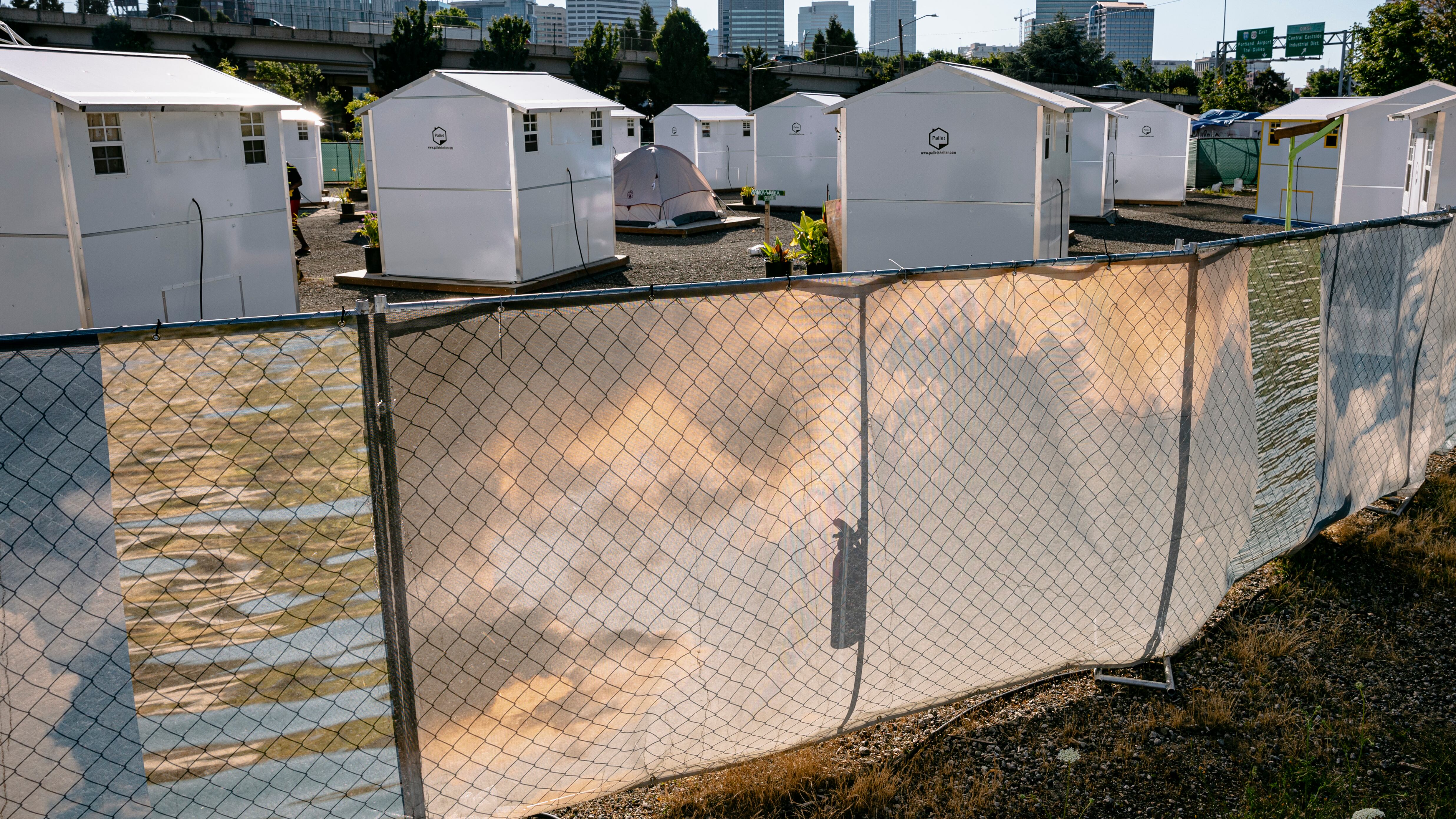Portland City Commissioner Dan Ryan’s office released a list of 70 possible locations for the city’s “safe rest villages” on Friday afternoon. The sanctioned camping sites, a pivotal component of City Hall’s plans to relocate unhoused people camped on sidewalks, will include basic hygiene facilities, laundry, trash services, behavioral health resources and case management.
Early locations include two grassy areas next to Moda Center, a site directly east of Kelly Butte Natural Area, a lot right by Union Station in Northwest Portland, and the old Firehouse Theatre just a few blocks west of Portland State University.
Three of the locations are along the Columbia Buffer Strip in North Portland, one is the Mt. Tabor Annex Building, and another is an old pump station in the Parkrose neighborhood. The list of sites varies considerably in terms of location, amenities and size.
The list will eventually be whittled down to 10 or 15 locations in the coming weeks, says Ryan’s spokesperson Margaux Weeke.
The sites are in all five quandrants of the city and are owned or managed by city bureaus: the Portland Bureau of Transportation, the Bureau of Environmental Services, Portland Parks and Recreation, the Housing Bureau, Prosper Portland or the Office of Management and Finance.
The city’s spreadsheet breaks down half a dozen features of each site: whether it has utility hookups, proximity to public transportation, history of contaminants, infrastructure capabilities, duration of availability and the size of property.
Earlier this spring, the city announced its intent to create six sanctioned campsites for homeless people with a capacity of 50 openings per site. Details of the sites have come at a trickle from Ryan’s office—likely for good reason, as sanctioned campsites have historically created a groundswell of pushback from neighborhoods located nearby.
The initial blueprint provided by Ryan’s office in June included a basic design for the sites that included 50 “structures”, “plants” and “art” space in the center, and some sort of perimeter around the sites.
Over the past few months, city commissioners that oversee bureaus that control land were asked to identify possible sites and submit them to Ryan’s office.
And on June 30, the City Council unanimously approved an ordinance that codified sweep protocols and created a framework that allows construction of the safe rest villages, which Ryan hopes to open by the end of the year.
Many of the sites will be easily eliminated from consideration based on lack of necessary infrastructure, including proximity to public transportation and the ability to support hygiene facilities.

